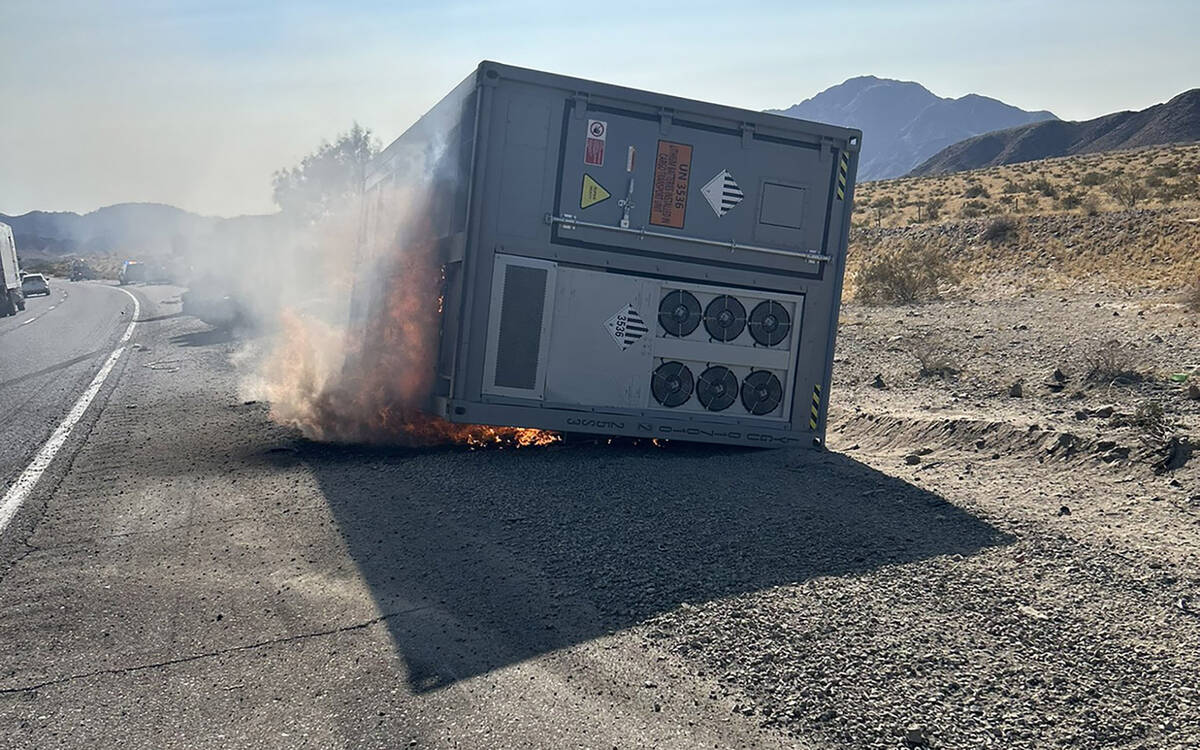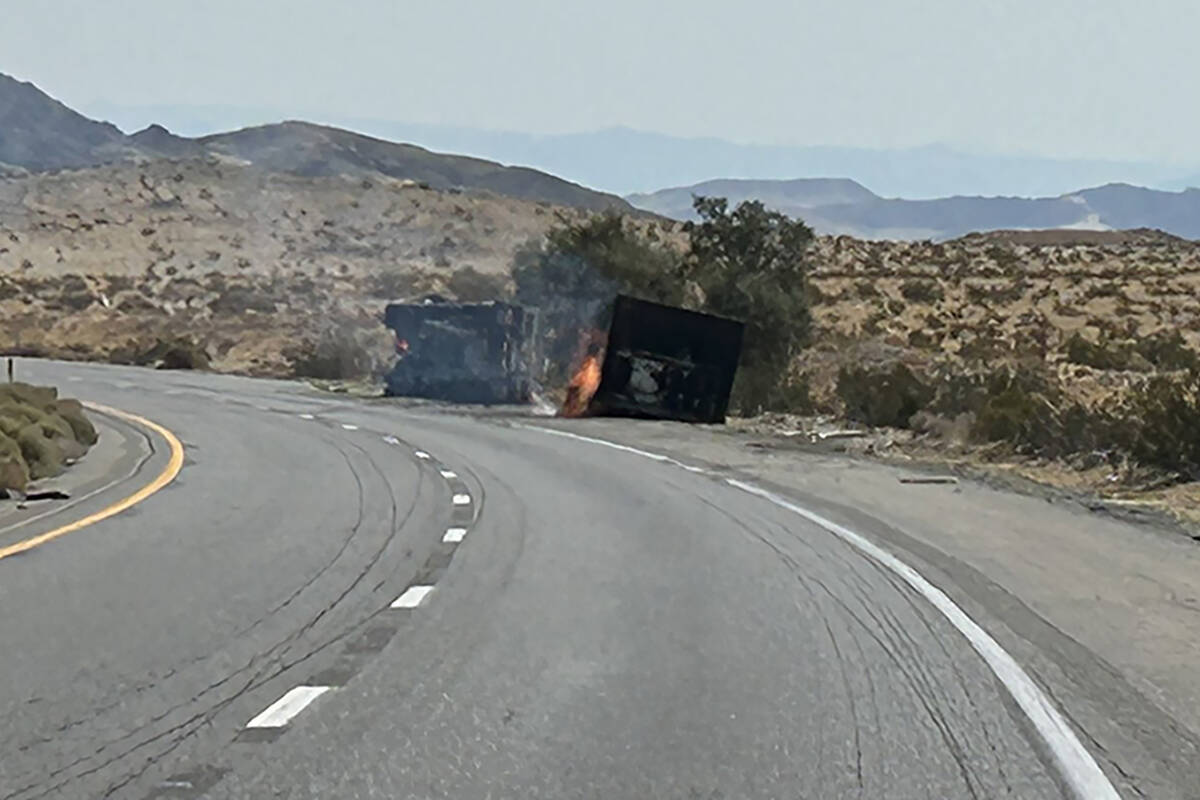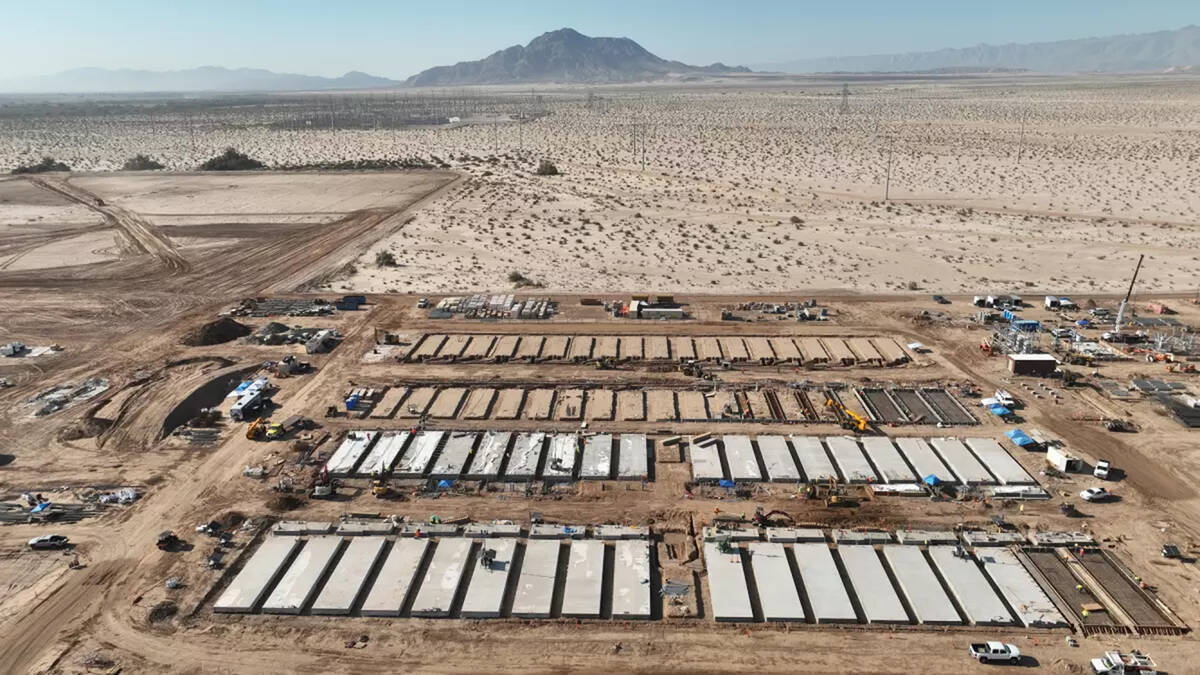Lithium-ion batteries causing fires, dangers on freeways, sparking calls for safety improvements
LOS ANGELES — For more than two days, a vital shipping passageway in the Port of L.A. was shut down, and the cause was surprising to some. A big rig overturned, sparking a fierce lithium-ion battery blaze that spewed toxic gases, snarled port traffic and resulted in what one official said was massive economic losses from delayed shipments.
The incident focused new attention, and fears, on the fuel cells helping drive the state’s clean energy transition.
But how dangerous are these batteries really? And should you be scared of your e-bike, vape pen or electric car?
Here is what you need to know.
Safety basics
These batteries are generally safe with proper care and storage, said Robert Rezende, San Diego Fire-Rescue Department battalion chief and the region’s first lithium-ion battery safety coordinator. But there is serious reason to worry about a crash involving a truck transporting these batteries or a battery storage facility catching fire — two types of incidents that can generate massive blazes, emitting toxic gases for several days, he said.
Problems on roadways
In May, the San Diego Fire-Rescue Department spent 14 days battling a hazardous fire that ignited at a lithium-ion battery storage facility in Otay Mesa. And a smaller fire was sparked in September 2023 at a battery storage unit in Valley Center in San Diego County, prompting evacuation orders.
In July, a lithium-ion battery fire set off by an overturned truck on Interstate 15 near Bakersfield left drivers trapped for hours in 109-degree heat. Then in last month’s incident, a fire in an overturned big rig carrying the batteries by way of the Vincent Thomas Bridge caused millions of dollars in shipping delays, according to L.A. City Councilmember Tim McOsker.
The cause of fires
Lithium-ion batteries are widely used in portable electronic devices and electric vehicles, including cellphones, e-bikes, laptops, wireless headphones, scooters, trucks and cars.
Fires can be caused by overcharging, overheating, physical damage or product defects, which trigger a process known as thermal runaway — where excessive heat inside a battery creates a self-sustaining chemical reaction that can then easily spread to adjacent batteries.
The best way to stay safe is to purchase devices only from reputable manufacturers, store them in a cool, dry place and use a charger with the correct voltage, Rezende said.
Once thermal runaway starts, the process cannot be stopped, and batteries will continue to burn for hours. In the case of large, multiple-battery fires, they can burn for days, all the while releasing toxic gases such as hydrogen fluoride, hydrogen chloride, carbon monoxide and carbon dioxide.
Growing demand
Fueled in part by a desire to transition away from fossil fuels, the use of lithium-ion batteries has skyrocketed over the last two decades — but so too has the number of battery fires and, as a result, the number of people calling for safety solutions.
In San Diego, Rezende says his department responds to an average of two to three lithium-ion battery fires a week. After the Otay Mesa incident, he took on a newly created role, studying how best to respond to lithium-ion fires and other alternative-energy safety risks.
“We realized we needed [to devote] a lot more attention to the challenge, because it was moving, and still is moving, very fast,” he said. “It’s moving at a rate that regulatory frameworks and permits and municipalities can’t keep up with.”
Assemblymember Tom Lackey (R-Palmdale) said he was alarmed by the impact of July’s I-15 fire, which took place in his district. Shortly thereafter, he and several Republican colleagues sent a letter to Gov. Gavin Newsom urging him to hit the brakes on his Advanced Clean Fleets rule, which requires large trucking fleets be all-electric by 2045 and most trucks at state ports to be all-electric by 2035.
First, Lackey wants safety regulations to be implemented statewide and fire departments to be educated on how to combat these blazes.
“I have no beef with moving toward electric vehicles,” Lackey told The Times. “But I say let’s put everything on hold for a few minutes until we know that we’re being able to implement this policy in a safe, nonthreatening manner.”
Councilmember McOsker, for his part, doesn’t want to put a pause on the rollout of electric vehicles but agrees that the state needs legislation guiding the safe storage and transport of these batteries.
“I do not want to slow down the efforts we have made to decarbonize,” he said. “I want us to use all of our ingenuity and all of our lessons learned to make sure that we keep moving as quickly, but as safely, as possible.”
Safety inspections the answer?
McOsker supported a bill introduced this year by Assemblymember Mike Gipson (D-Carson) that would have required a basic safety inspection of all trucks before they leave port terminals; the bill, however, died in the Assembly. After the September big-rig fire, McOsker introduced a City Council motion to explore the feasibility of implementing such a policy at the Port of L.A.
Currently, the only trucks that are required to do safety inspections before departing a terminal are those that have bargaining agreements with the International Longshore and Warehouse Union, he said. Independent or privately owned truck operators have an incentive to depart and deliver their goods as quickly as possible, he said.
“I don’t think we should depend upon the free market system to ensure the safety of our traveling public and our neighborhoods,” said McOsker. “I think that a local rule would be very important, but I would really prefer a statewide rule, and I think ultimately federal legislation on how to transport and utilize these batteries across the nation would be very important.”
Improving safety
Rezende said there were several things that could be done to increase transportation safety. They include using lowboy trailers that are at a lower risk of tipping over, as well as adhering to the recommendation that batteries should be transported at a 30% charge — which is already a requirement for batteries shipped by air — and reduces the chance of a fire.
In addition, manufacturers are working to develop newer, safer batteries and storage systems. For example, they are enclosing batteries in thicker cases and increasing the space between batteries to lower the risk of fires spreading, Rezende said.
“Over the course of 10 years, we’ve improved our safety standards significantly,” he said. “So the new systems that are going into place are like apples and oranges compared to the old systems.”
Still, people should be wary of older batteries in the resale market or sitting in storage facilities, he cautioned.
But with a combination of improved technology, new regulations and more fire department education, he believes California can meet the challenge of safely managing these powerful batteries.
























